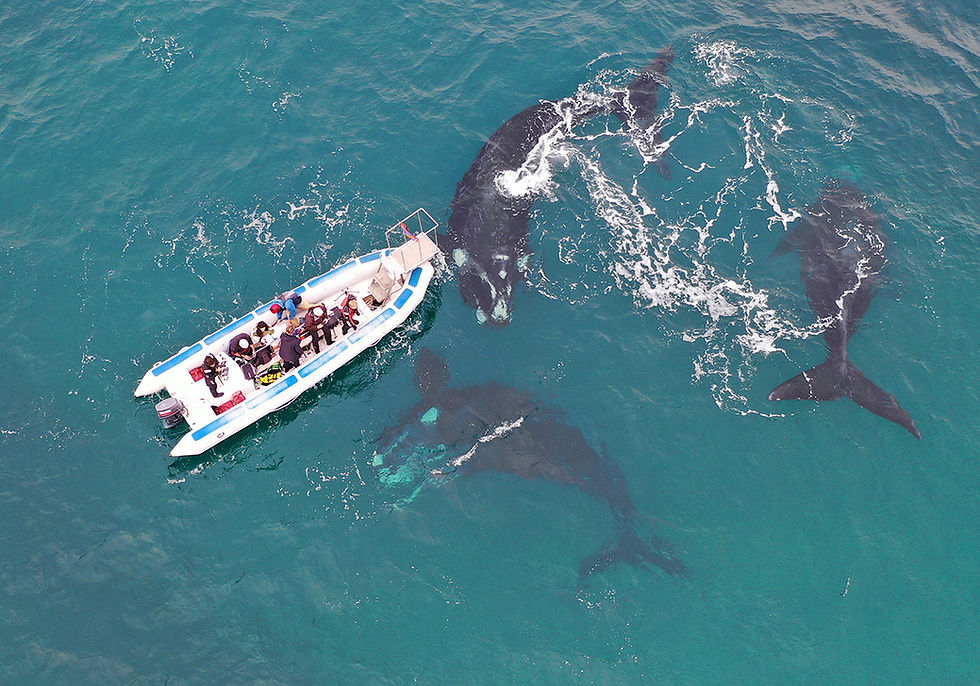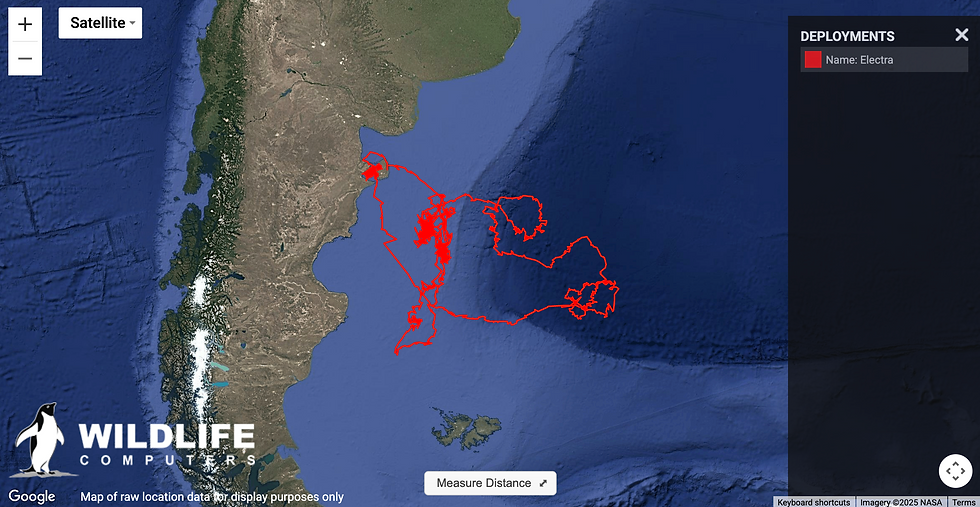Electra and her calf: 239 days that changed the tide
- Gabriela Casuso

- Sep 23
- 2 min read

By Gabriela Casuso, marine educator and founder of Proyecto Acuática
An epic and deeply moving journey: Electra, a southern right whale, set out with her calf on a voyage of more than 18,000 km over 239 days. More than a scientific record, their odyssey is a living lesson about motherhood, resilience, and how the ocean connects all of us, once again.
On September 28, 2021, at Península Valdés (Chubut, Argentina), a team from the Whale Conservation Institute (ICB), along with Ocean Alliance (USA), fitted Electra and her calf with a satellite transmitter. What followed was an astonishing route: on November 6, 2021, they began a long journey crossing the Argentine continental shelf, reaching the edge of the continental slope and the Blue Hole -one of the most productive areas of the South Atlantic- before finally returning to Golfo San José on May 21, 2022.
Covering 18,087 km in 239 days, this migration is the first complete tracking of a southern right whale with a calf. This achievement was made possible by the Siguiendo Ballenas program, scientifically led by Mariano Sironi, with the support of Victoria Rowntree, María Inés García, Marcos Ricciardi, and Luciana Ricciardi.

But behind the numbers lies a deeper story: Electra guiding her calf through shifting currents, predators, and constantly changing weather. This narrative, rich in emotion and strength, highlights the urgency of protecting not only these living routes but also the source that sustains them: Antarctica. Safeguarding Antarctic ecosystems today ensures a future for migratory species like Electra, and the hope for a living ocean.
Electra’s story is itself a powerful tool for ocean literacy. Imagine it shared in classrooms and communities as a visual tale: maps tracing her route, graphs revealing coastal pulses, podcasts narrating each oceanic leap, raising awareness among young people and adults alike. When science is told with emotion, it does more than inform: it connects, inspires, and awakens consciousness.
That connection transcends borders. A whale traveling from Argentina resonates in classrooms across Asia, in African education networks, and in European climate initiatives. Siguiendo Ballenas can become a global symbol of learning to protect. It teaches us that caring for Antarctica is not the task of a few, but a shared commitment of all who inhabit this blue planet.
Electra and her calf’s journey is not just a scientific feat: it is oceanic poetry, a school of hope, and an urgent invitation to act. Ocean literacy does not spring only from lectures or encyclopedias, but from mornings marked by whale songs and living maps that beat with the blue heart of our planet."
More information: https://siguiendoballenas.org/



